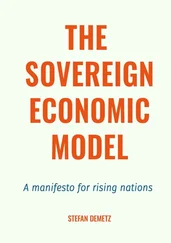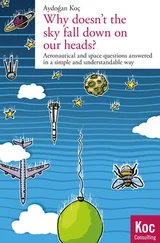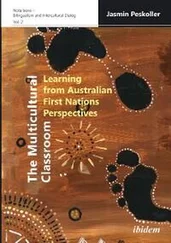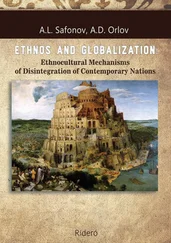Lewis and development economists building on his work were certainly right in identifying dual economies. South Africa was one of the clearest examples, split into a traditional sector that was backward and poor and a modern one that was vibrant and prosperous. Even today the dual economy Lewis identified is everywhere in South Africa. One of the most dramatic ways to see this is by driving across the border between the state of KwaZulu-Natal, formerly Natal, and the state of the Transkei. The border follows the Great Kei River. To the east of the river in Natal, along the coast, are wealthy beachfront properties on wide expanses of glorious sandy beaches. The interior is covered with lush green sugarcane plantations. The roads are beautiful; the whole area reeks of prosperity. Across the river, it is as if it were a different time and a different country. The area is largely devastated. The land is not green, but brown and heavily deforested. Instead of affluent modern houses with running water, toilets, and all the modern conveniences, people live in makeshift huts and cook on open fires. Life is certainly traditional, far from the modern existence to the east of the river. By now you will not be surprised that these differences are linked with major differences in economic institutions between the two sides of the river.
To the east, in Natal, we have private property rights, functioning legal systems, markets, commercial agriculture, and industry. To the west, the Transkei had communal property in land and all-powerful traditional chiefs until recently. Looked at through the lens of Lewis’s theory of dual economy, the contrast between the Transkei and Natal illustrates the problems of African development. In fact, we can go further, and note that, historically, all of Africa was like the Transkei, poor with premodern economic institutions, backward technology, and rule by chiefs. According to this perspective, then, economic development should simply be about ensuring that the Transkei eventually turns into Natal.
This perspective has much truth to it but misses the entire logic of how the dual economy came into existence and its relationship to the modern economy. The backwardness of the Transkei is not just a historic remnant of the natural backwardness of Africa. The dual economy between the Transkei and Natal is in fact quite recent, and is anything but natural. It was created by the South African white elites in order to produce a reservoir of cheap labor for their businesses and reduce competition from black Africans. The dual economy is another example of underdevelopment created, not of underdevelopment as it naturally emerged and persisted over centuries.
South Africa and Botswana, as we will see later, did avoid most of the adverse effects of the slave trade and the wars it wrought. South Africans’ first major interaction with Europeans came when the Dutch East India Company founded a base in Table Bay, now the harbor of Cape Town, in 1652. At this time the western part of South Africa was sparsely settled, mostly by hunter-gatherers called the Khoikhoi people. Farther east, in what is now the Ciskei and Transkei, there were densely populated African societies specializing in agriculture. They did not initially interact heavily with the new colony of the Dutch, nor did they become involved in slaving. The South African coast was far removed from slave markets, and the inhabitants of the Ciskei and Transkei, known as the Xhosa, were just far enough inland not to attract anyone’s attention. As a consequence, these societies did not feel the brunt of many of the adverse currents that hit West and Central Africa.
The isolation of these places changed in the nineteenth century. For the Europeans there was something very attractive about the climate and the disease environment of South Africa. Unlike West Africa, for example, South Africa had a temperate climate that was free of the tropical diseases such as malaria and yellow fever that had turned much of Africa into the “white man’s graveyard” and prevented Europeans from settling or even setting up permanent outposts. South Africa was a much better prospect for European settlement. European expansion into the interior began soon after the British took over Cape Town from the Dutch during the Napoleonic Wars. This precipitated a long series of Xhosa wars as the settlement frontier expanded further inland. The penetration into the South African interior was intensified in 1835, when the remaining Europeans of Dutch descent, who would become known as Afrikaners or Boers, started their famous mass migration known as the Great Trek away from the British control of the coast and the Cape Town area. The Afrikaners subsequently founded two independent states in the interior of Africa, the Orange Free State and the Transvaal.
The next stage in the development of South Africa came with the discovery of vast diamond reserves in Kimberly in 1867 and of rich gold mines in Johannesburg in 1886. This huge mineral wealth in the interior immediately convinced the British to extend their control over all of South Africa. The resistance of the Orange Free State and the Transvaal led to the famous Boer Wars in 1880–1881 and 1899–1902. After initial unexpected defeat, the British managed to merge the Afrikaner states with the Cape Province and Natal, to found the Union of South Africa in 1910. Beyond the fighting between Afrikaners and the British, the development of the mining economy and the expansion of European settlement had other implications for the development of the area. Most notably, they generated demand for food and other agricultural products and created new economic opportunities for native Africans both in agriculture and trade.
The Xhosa, in the Ciskei and Transkei, reacted quickly to these economic opportunities, as the historian Colin Bundy documented. As early as 1832, even before the mining boom, a Moravian missionary in the Transkei observed the new economic dynamism in these areas and noted the demand from the Africans for the new consumer goods that the spread of Europeans had begun to reveal to them. He wrote, “To obtain these objects, they look … to get money by the labour of their hands, and purchase clothes, spades, ploughs, wagons and other useful articles.”
The civil commissioner John Hemming’s description of his visit to Fingoland in the Ciskei in 1876 is equally revealing. He wrote that he was
struck with the very great advancement made by the Fingoes in a few years … Wherever I went I found substantial huts and brick or stone tenements. In many cases, substantial brick houses had been erected … and fruit trees had been planted; wherever a stream of water could be made available it had been led out and the soil cultivated as far as it could be irrigated; the slopes of the hills and even the summits of the mountains were cultivated wherever a plough could be introduced. The extent of the land turned over surprised me; I have not seen such a large area of cultivated land for years.
As in other parts of sub-Saharan Africa, the use of the plow was new in agriculture, but when given the opportunity, African farmers seemed to have been quite ready to adopt the technology. They were also prepared to invest in wagons and irrigation works.
As the agricultural economy developed, the rigid tribal institutions started to give way. There is a great deal of evidence that changes in property rights to land took place. In 1879 the magistrate in Umzimkulu of Griqualand East, in the Transkei, noted “the growing desire of the part of natives to become proprietors of land—they have purchased 38,000 acres.” Three years later he recorded that around eight thousand African farmers in the district had bought and started to work on ninety thousand acres of land.
Africa was certainly not on the verge of an Industrial Revolution, but real change was under way. Private property in land had weakened the chiefs and enabled new men to buy land and make their wealth, something that was unthinkable just decades earlier. This also illustrates how quickly the weakening of extractive institutions and absolutist control systems can lead to newfound economic dynamism. One of the success stories was Stephen Sonjica in the Ciskei, a self-made farmer from a poor background. In an address in 1911, Sonjica noted how when he first expressed to his father his desire to buy land, his father had responded: “Buy land? How can you want to buy land? Don’t you know that all land is God’s, and he gave it to the chiefs only?” Sonjica’s father’s reaction was understandable. But Sonjica was not deterred. He got a job in King William’s Town and noted:
Читать дальше












